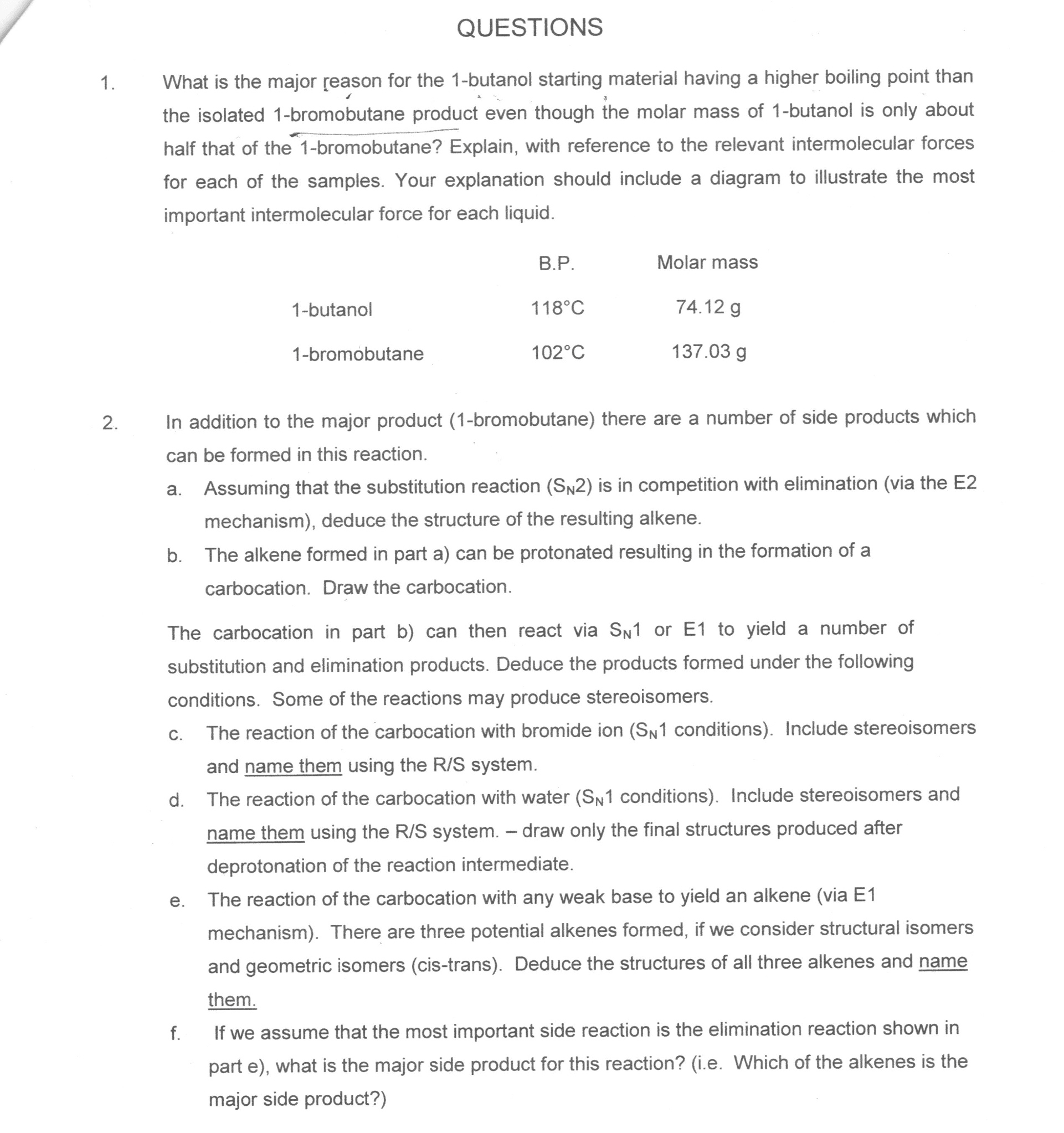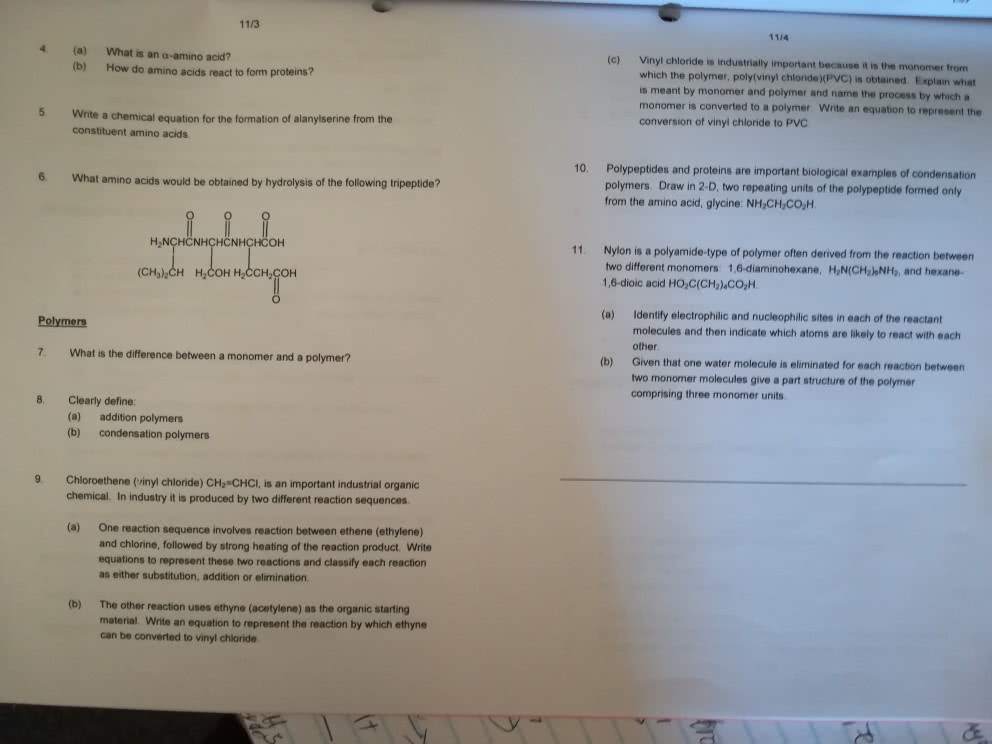01:160:307 Lecture Notes - Lecture 6: Bond Energy, Alkene, Abscissa And Ordinate

Chemical Reactions – Mechanism
In a chemical reaction a starting material (or materials), SM, is (or are) converted to a product (or
products), P.
SM P
We will encounter many different reaction types.
A B rearrangement
A + B C addition
A + B C + D substitution, elimination
A B + C fragmentation
So far in this course, you have learned about one relatively simple reaction type, the transfer of a
proton, H+, from an acid to a base. Beginning with the second chapter on alkenes we will learn
many more reactions, both simple and complicated. Each of these reactions has three aspects that
we need to understand: its kinetics, its energetics, and its mechanism.
We will ask three questions about each reaction – the answers are provided by these approaches
How fast is the conversion? KINETICS
Is there a change in energy? THERMODYNAMICS ENERGEICS
How are the individual atoms disconnected and reconnected? MECHANISM
Kinetics: The rate at which the starting material, SM, is depleted and the rate at which the
product, P, is being formed. In this course kinetics will be introduced in detail in Chapter 9, but
we will describe and compare some simple kinetic aspects like fast (faster) or slow (slower).
Energetics: The changes in free energy and enthalpy as the starting material(s), SM, is (are)
converted to the product(s), P. We will discuss energetics to some extent.
Mechanism: the detailed description of how the structure(s) of the starting material(s), SM, is
(are) converted to the structure(s) of the product(s), P.
The starting material(s) has (have): a
composition (the number of each type of
atom present); a structure(s), i.e., which
atoms are connected to which, bond lengths,
bond strengths, and bond angles, dihedral
angles; a characteristic energy.
The product(s) MUST have the same
composition as the starting material(s)
[you cannot lose or gain any atoms – the two
sides are balanced in composition and
charge]; the structure (connectivity) has
changed; the energy !may change, too.
Document Summary
In a chemical reaction a starting material (or materials), sm, is (or are) converted to a product (or products), p. B + c rearrangement addition substitution, elimination fragmentation. The starting material(s) has (have): a composition (the number of each type of atom present); a structure(s), i. e. , which atoms are connected to which, bond lengths, bond strengths, and bond angles, dihedral angles; a characteristic energy. The product(s) must have the same composition as the starting material(s) [you cannot lose or gain any atoms the two sides are balanced in composition and charge]; the structure (connectivity) has changed; the energy may change, too. So far in this course, you have learned about one relatively simple reaction type, the transfer of a proton, h+, from an acid to a base. Beginning with the second chapter on alkenes we will learn many more reactions, both simple and complicated.




